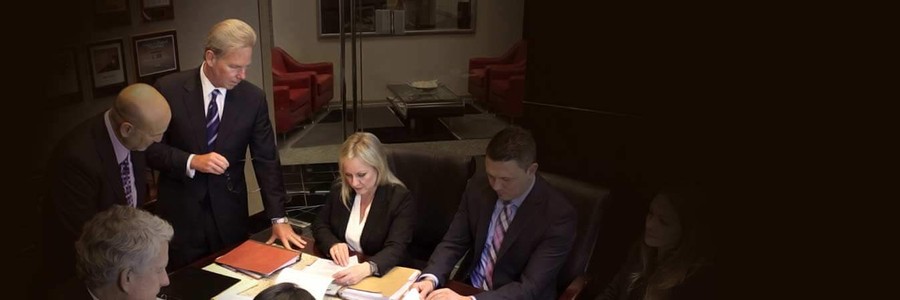Who is at Fault in an Unusual Car Accident?
In most incidents, it is obvious of how to tell who is at fault in a car accident. Whether someone was not paying attention or not following the rules, the law makes it fairly clear who is in the wrong and who is in the right.
Generally (though not always), the following situations will result in a driver being considered at fault:
- The driver was not obeying the law.
- The driver struck or made contact between the front of their car and the other driver's car.
- The driver rear-ended someone else's car.
- The driver was making a left turn.
There are, however, several situations in which the law is not immediately clear, or it may seem like a driver is not at fault even if he/she is breaking a minor law. This page will go into detail about some of these confusing situations and give an opinion on whose side the law is likely to fall on. When an car accident occurs and a traffic collision or police report is made, the officer at the scene will take note of what he/she believes caused the accident, given the evidence and testimony of both drivers. The driver whose action was determined to be the primary collision factor (PCF) is at fault.
Disclaimer: Each car crash takes place due to a number of different factors. The types of accidents and opinions given here, determining who is at fault, may not be the same as those expressed by an officer at the scene or a judge in traffic court.
Situation 1: Car Struck when Backing Out onto a Street
Situation:
Car A is backing out of their driveway onto a narrow street. The street has many cars parked along the side, and a truck is blocking Car A's view of the street.
Car B is traveling down the street at the speed limit when Car A backs up in front of them. Car B collides with Car A at the back of the car.
Whose Fault Is It?
When a car is pulling out of a driveway, they have the responsibility of pulling into the road only when it is safe to do so, according to California Vehicle Code 22106. Therefore, the fault will usually fall on Car A. Even though the driver could not see any oncoming traffic, it was still his/her fault for not proceeding more slowly and carefully until they knew it was safe to pull out all the way.
Primary Collision Factor:
CVC 22106 - Backing a vehicle on a highway unsafely
Car at Fault:
Car A
Situation 2: Car Rear-Ended when Stalled at a Green Light
Situation:
Car A is at an intersection when the light turns green. Car A stalls and cannot proceed forward. Car B is approaching the intersection and assumes Car A to be moving with the rest of the proceeding cars. Car B cannot slow down in time when it realizes that Car A is not moving, and rear-ends Car A.
Whose Fault Is It?
Any time a driver is behind the wheel, they are responsible for driving at a safe speed according to CVC 22350. This law can be violated even when driving slower than the posted speed limit, if conditions are not safe. Despite the fact that Car A was stalled when it should have been moving, the driver of Car B should have kept their eyes open and recognized that there was a car stopped in front of them. Therefore, in this situation, the primary collision factor was the driver of Car B not following CVC 22350 and driving too fast to be able to stop in time to avoid an accident.
Primary Collision Factor:
CVC 22350 - Driving at an unsafe speed.
Car at Fault:
Car B
Situation 3: Two Cars Collide when Turning into the Same Lane
Situation:
Car A and Car B approach a 4-way-stop intersection and Car B gets there first. Car A is making a U-turn. At the same time, Car B is turning right onto the same street. As Car A starts to make a U-turn, Car B turns right and pulls into the middle lane. The two cars strike each other.
Whose Fault Is It?
According to the rules of a 4-way-stop intersection, cars should proceed through the intersection in the same order that they arrived. Car B arrived very slightly ahead of Car A, meaning that Car B should have gone first.
In all likelihood there will not be video evidence of the events that lead to a crash like this one. Without such, an argument can be made to the insurance company that both cars arrived at the intersection at the same time, and therefore the car on the right, Car A, should have had the right-of-way. However, since we know better we can determine that Car A made the turn when they should not have, and is therefore responsible.
Primary Collision Factor:
CVC 21800 - Failing to Yield Right of Way to a Vehicle in the Intersection
Car at Fault:
Car A
Situation 4: Two Cars Collide when Both Make a U-Turn
Situation:
Car A is making a U-turn onto a narrow street. To compensate for a poor turning radius, the driver first pulls to the right and then initiates the u-turn to the left. Car B sees Car A moving right and assumes that it is going to go straight. Car B drives forward and initiates a u-turn at the same time as Car A. The cars collide prior to completing the U-turn.
Whose Fault Is It?
Car A moving to the right first is potentially confusing for Car B, but not illegal. When Car B starts making it's turn, regardless of whether it believes that Car A is going straight, making a left turn, or making a U-turn, it's the driver's responsibility to make their turn in a safe manner. CVC 21451 states that a driver "[making] a U-turn... shall yield the right-of-way to other traffic... lawfully within the intersection." Since Car A was lawfully in the intersection at the point of contact, Car B would be considered to be at fault.
Primary Collision Factor:
CVC 21451 - U-turning driver failing to yield to traffic within an intersection
Car at Fault:
Car B
Situation 5: Car Struck while Waiting to Turn in an Intersection
Situation:
Car A is turning at an unprotected left-turn in an intersection. The driver has already pulled into the intersection and is waiting for cars to pass. The light turns red for oncoming cars and Car A starts to complete its left turn. Meanwhile Car B is approaching the intersection from the east and their light turns green. He/She drives through the intersection and strikes Car A as it is finishing its turn.
Whose Fault Is It?
CVC 21800 states that "The driver of a vehicle approaching an intersection shall yield the right-of-way to any vehicle which has entered the intersection from a different highway." Driver A has already entered the intersection and is waiting until it is safe to proceed. Therefore it is Car B's responsibility to drive no faster than is safe to do so, and to yield the right of way to other vehicles before they enter the intersection.
Primary Collision Factor:
CVC 21800 - Failing to yield to traffic within an intersection
Car at Fault:
Car B
Situation 6: Car Struck in the Middle of a 5-Point Turn
Situation:
Car A is driving in a residential street and decides to make a u-turn. The driver checks for other cars in front of and behind the car, and makes the turn once everything is clear. The street is narrow and the driver is forced to make a 5-point turn. At this point, Car A is faced perpendicular street, and Car B approaches, trying to go around Car A. Car A does not see Car B and backs up into him/her while completing the 5-point turn.
Whose Fault Is It?
In this unusual situation, we find that neither vehicle is waiting to proceed safely. Car A tries to make a U-turn when Car B is approaching, only to find that the road is more narrow than they thought and that they need to make a 5-point turn. Car B stops for Car A, but becomes impatient and tries to go around when they could have waited instead.
When Car A backs up for the final time, the driver should have looked in his rear-view mirror to make sure that they were clear to proceed. However, because Car B would not have been struck had it not attempted to go around, we find this action to be the primary collision factor.
Primary Collision Factor:
CVC 21750 - Failing to pass without interfering with the safe operation of the overtaken vehicle.
Car at Fault:
Car B
Situation 7: Car Traveling in the Middle Lane strikes a Car Turning Left
Situation:
Car A is making a left turn out of a driveway onto a crowded street in bumper-to-bumper traffic. Meanwhile Car B has moved into the middle lane in preparation for turning left into a driveway. Car A's view of the middle lane is blocked by a truck and as it enters the middle lane, Car A is struck by Car B.
Whose Fault Is It?
California Law allows a "two-way left-turn lane", or center lane, to be used by vehicles going in both directions, as long as vehicles only travel in the lane for up to 200 feet, or are using the lane to prepare to merge into adjacent lanes of travel. In this situation both vehicles are allowed to occupy the center lane. Car B started traveling in the center lane prior to Car A, but Car A has also been left space to proceed a truck, therefore committing other cars to the responsibility of allowing Car A to have the right of way.
Because both cars could have proceeded more slowly and watched for each other when they both had the right to be within the center lane, we believe that there would be a shared liability for both drivers.
Primary Collision Factor:
CVC 21801 - Failing to yield right-of-way when turning left.
Car at Fault:
Both Cars
Conclusion:
If you have any questions such as "what happens if I am at fault in a car accident?" or "what happens if you are not at fault in a car accident?", send our accident attorneys a message! With your permission we may even add an example of your accident situation to our page to help other drivers. Contact the personal injury lawyers of Bisnar Chase for a free consultation.








